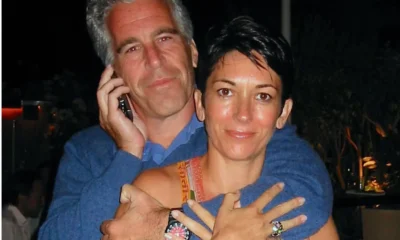Entertainment
Amos Andrews: Is Meri Brown’s Boyfriend a Deadbeat Dad?!? on January 25, 2024 at 3:22 pm The Hollywood Gossip
Last week, Meri Brown surprised social media followers by dropping this romantic bombshell:
On the occasion of her 53rd birthday, the Sister Wives star confirmed that she’s at last moved on from ex-spouse Kody, telling Instagram followers:
“Meet Amos, the good looking guy I’ve been dating since October!”
Meri Brown opens up here to the TLC cameras. (TLC)
In the days since this announcement was made, however, more information has come to light in regard to Amos Andrews.
For one thing, we learned that Andrews once filed for bankruptcy.
For another thing, we learned that Andrews has been married four times.
On their own, neither of these tidbits should be a dealbreaker. Who are we to judge someone’s past financial or romantic missteps, you know?
Meri Brown appears to be ruminating on life in this photo from an episode of Sister Wives. (TLC)
HOWEVER, The Sun has now revealed that Amos married his second wife, Shannon Marie Martin, in Las Vegas on February 18, 1995 … when he was 26 and she was 18.
They welcomed a daughter together, Tiffany Andrews, two years later.
Fast forward to August 2000 when Martin filed for divorce because she said the union was “irretrievably broken and there is no reasonable prospect of reconciliation.”
At the time the divorce was finalized, the judge awarded both parties the care, custody and control of their daughter as outlined in the Joint Parenting Plan.
Meri Brown is looking here into the camera and admitting her relationship is over. (TLC)
According to official records, Amos was ordered to pay Shannon $373 per month in child support until their daughter turned 18 years old.
Over the next dozen years, though, Martin went back to court on multiple occasions because she claimed that Andrews fell behind on these payments.
Citing missed payments that totaled approximately $10,000, Martin wrote in one filing:
“The father has been difficult to reach, and frequently changed phone numbers, mailing addresses and email addresses without informing the mother, sometimes multiple times a year.”
Meri Brown has quite a look on her face in this Sister Wives interview. (TLC)
Shannon also alleged in the court docs that he had “refused to contribute to the child’s expenses for daycare, medical/dental/vision, and education,” for the past 12 years, and that she paid for “every extra-curricular school activity, medical appointment, counseling, braces, glasses, contacts, etc.”
Finally, in March 2014, Andrews and Martin arrived at a resolution.
A judge decreed that Amos only had to pay Shannon $404.53 in child support arrearages (or payments owed), along with $4,092.62 for childcare expenses.
Due to a change in both his salary and her salary, the entire child support system was also amended at that time so that Martin actually paid Amos $158 per month for the duration of their joint custody arrangement.
Meri Brown looks a little bit confused when asked a question here by the host of the Sister Wives reunion. (TLC)
This is all a lot to process and we don’t know all of the details.
But it at least sounds as if Meri has been made aware of her boyfriend’s past.
“I sort of have three ex-sister wives and an ex-husband. I beat you,” she joked to Amos via Facebook last week, referring to former Christine, Janelle and Meri.
“Everybody has been through issues before, who the heck cares that you had a bankruptcy?” she also asked her lover, stating she had once made this same financial move and adding:
“You just build your way out of it. It doesn’t define who you are. It doesn’t matter what happened to you in your past, who you are now is what matters and how you act on it.”
Amos Andrews: Is Meri Brown’s Boyfriend a Deadbeat Dad?!? was originally published on The Hollywood Gossip.
Amos Andrews is dating Meri Brown, prompting a great deal of concern from those familiar with his sordid history.
Amos Andrews: Is Meri Brown’s Boyfriend a Deadbeat Dad?!? was originally published on The Hollywood Gossip.
The Hollywood Gossip Read More
Entertainment
Netflix’s $82.7 Billion Warner Bros Deal Signals the Rise of a New Hollywood Power
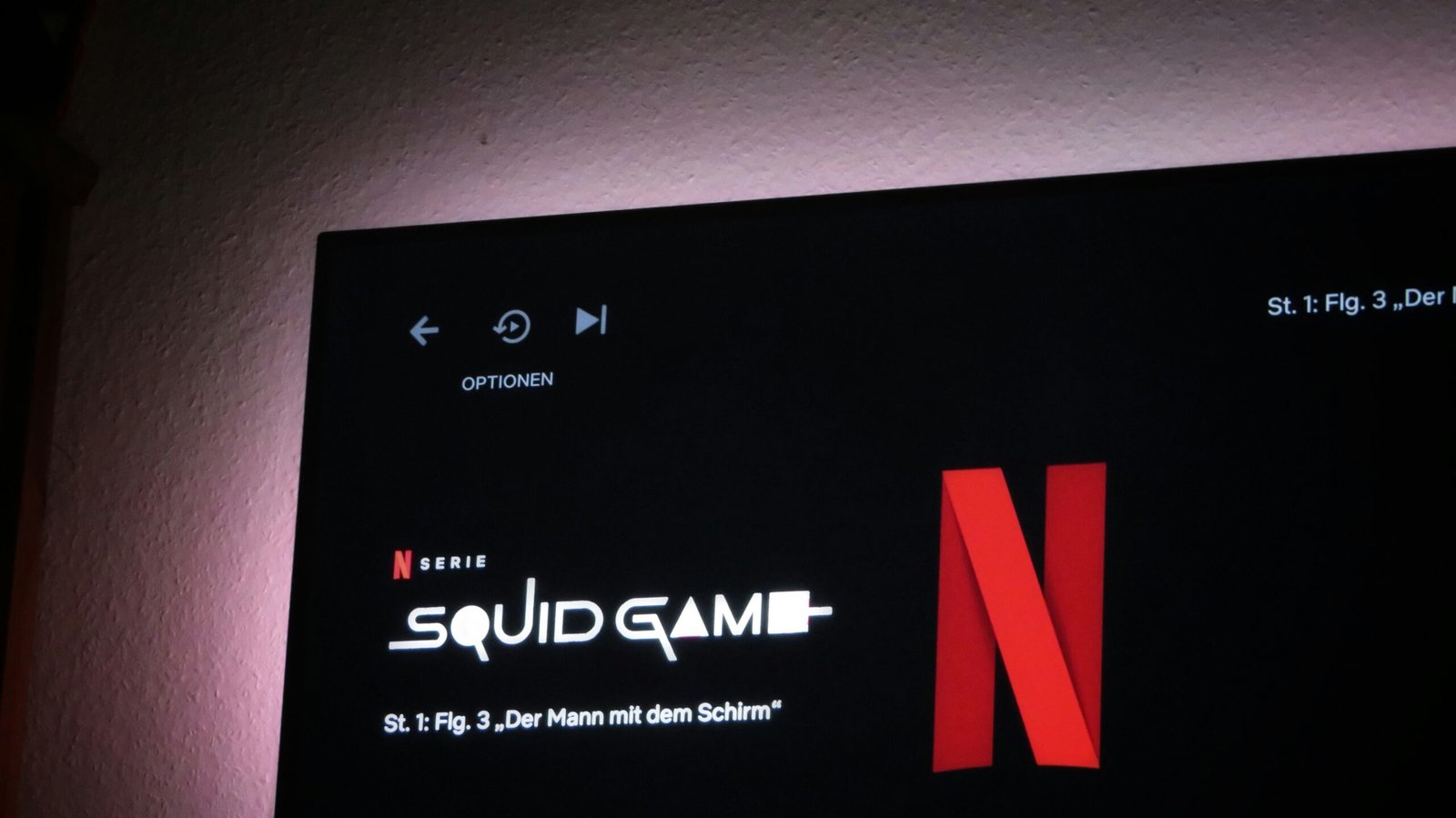
For years, Netflix was the outsider—the tech disruptor knocking on the studio gates.
With its $82.7 billion move to acquire Warner Bros, it is no longer knocking; it is taking the keys and changing the locks.
The deal transforms Netflix from pure‑play streamer into a full‑scale studio‑streamer hybrid, fusing Silicon Valley’s data obsession with a century of Hollywood storytelling muscle.
From red envelopes to studio gates
Netflix’s journey from DVD‑by‑mail upstart to owner of a legacy studio is not just a growth story; it is a generational power shift. Warner Bros once embodied the old studio system, with backlots, soundstages, and iconic franchises like DC, “Harry Potter,” and “Game of Thrones.” By absorbing that machine, Netflix is effectively buying time—decades of brand equity and infrastructure it could never build from scratch at the same speed.
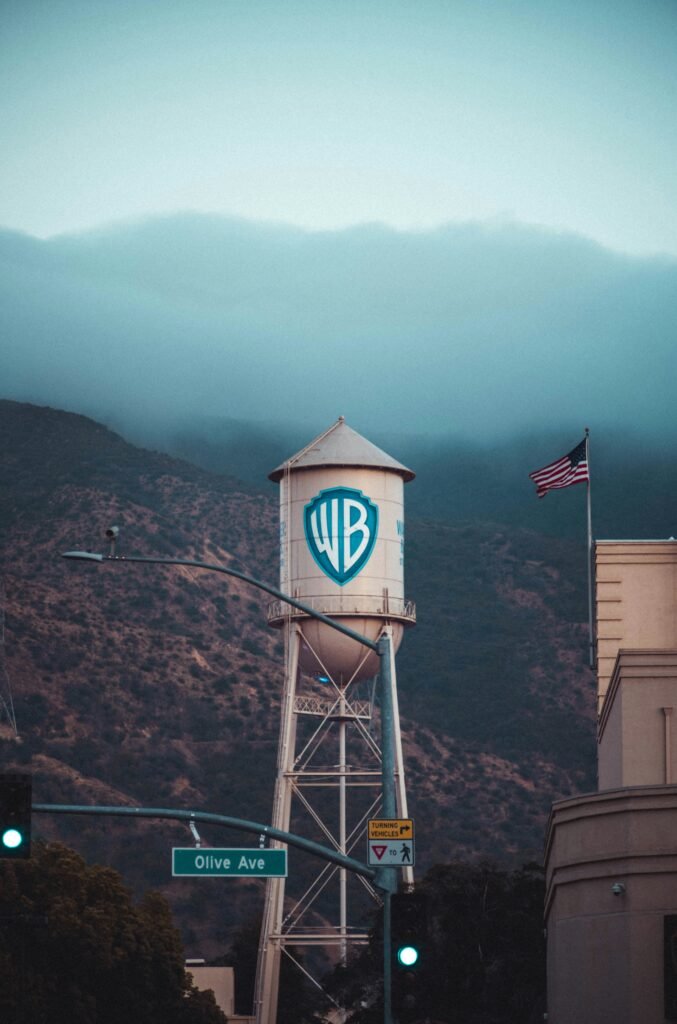
The move also closes a chaotic chapter for Warner Bros Discovery, which has wrestled with streaming strategy, debt, and identity since its last megamerger. Selling the studio and streaming assets while spinning off cable networks is a tacit admission that the future of this business is on‑demand, not in linear bundles.
What this new giant actually controls
Once the ink is dry, Netflix will not just host Warner content; it will own the pipes that create it. That means control of blockbuster IP, a deep catalog, HBO’s prestige engine, and global distribution to hundreds of millions of subscribers. In practical terms, one company will decide where and how a massive portion of premium film and TV reaches audiences worldwide.
This is where the “new Hollywood power” language earns its weight.
Disney may still be the benchmark for franchise dominance, but Netflix plus Warner tilts the axis of competition. The question is no longer whether streaming can rival studios; it is whether any traditional studio can rival a platform that has become a studio.
The upside—and the anxiety
For viewers, the upside is obvious: more of what they love in one place, fewer log‑ins, and the thrill of seeing HBO‑level shows and Warner‑scale films flowing through Netflix’s global pipeline. For creators and competitors, the mood is more complicated. Labor groups are already warning about reduced competition for scripts and talent, while regulators eye the merger as another test case in how far media consolidation can go.

The Trump administration’s stance on large media deals adds another layer of uncertainty, with analysts openly debating whether political pressure could reshape or stall the transaction. In other words, this is not just a business story; it is a power story, with cultural, economic, and political stakes colliding in one headline‑ready package.
Entertainment
This ‘Too Small’ Christmas Movie Turned an $18M Gamble Into a Half‑Billion Classic
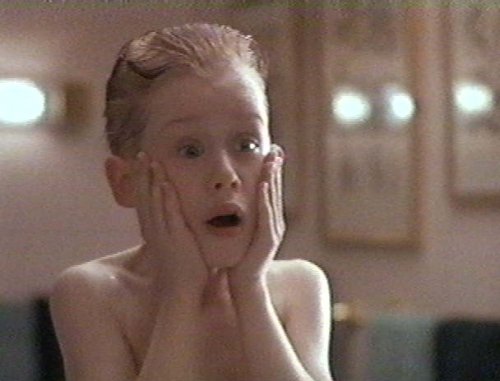
Studios almost left this Christmas staple on the cutting‑room floor. Executives initially saw it as a “small” seasonal comedy with limited box‑office upside, and internal budget fights kept the project hovering in limbo around an $18 million price tag.
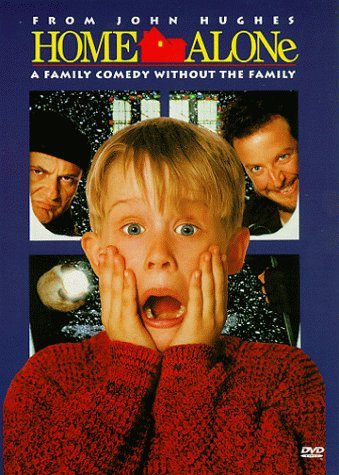
The fear was simple: why spend real money on a kid‑driven holiday film that would vanish from theaters by January?
That cautious logic aged terribly. Once released, the movie exploded past expectations, pulling in roughly $475–$500 million worldwide and camping at the top of the box office for weeks.
That’s a return of more than 25 times its production budget, putting it among the most profitable holiday releases in modern studio history.
What some decision‑makers viewed as disposable seasonal content quietly became a financial engine that still prints money through re‑runs, streaming, and merchandising every December.
The story behind the numbers is part of why fans feel so attached to it. This was not a four‑quadrant superhero bet with guaranteed franchise upside; it was a character‑driven family comedy built on specific jokes, one child star, and a very particular vision of Christmas chaos. The fact that it nearly got shelved—and then turned into a half‑billion global phenomenon—makes every rewatch feel like a win against studio risk‑aversion.
When you press play each year, you are not just revisiting nostalgia; you are revisiting the rare moment when a “small” movie out‑performed the system that almost killed it.
Entertainment
Anne Hathaway Just Turned Her Instagram Bio Into a 2026 Release Calendar
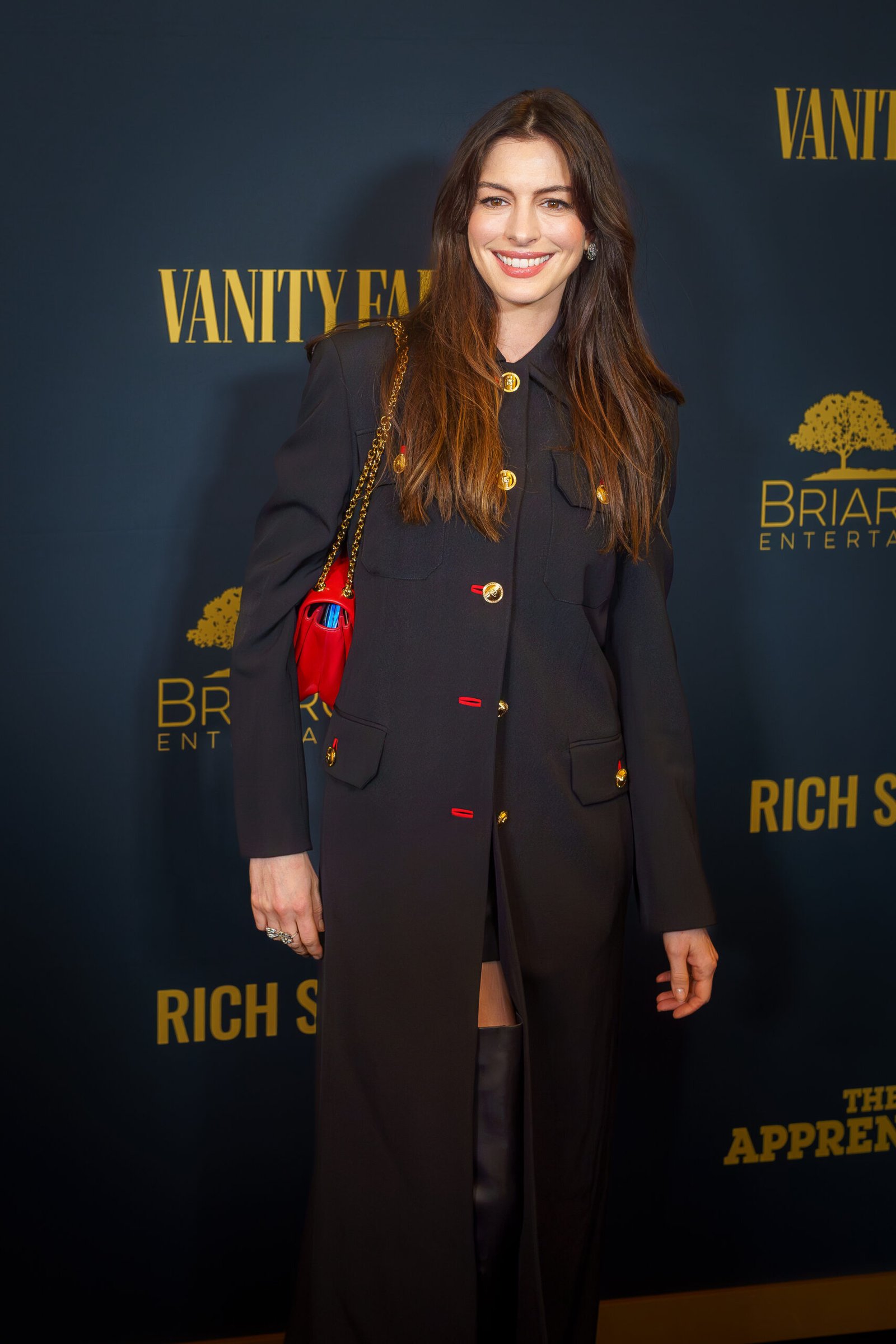
Anne Hathaway has quietly confirmed that 2026 is going to be her year, and she did it in the most Anne way possible: with a soft-launch in her Instagram bio.
Instead of a traditional studio announcement, the Oscar-winning actor updated her profile text with a simple list of titles and dates, effectively revealing a four-film run that reads like a mini festival of her work spread across the year.
For fans, the bio now doubles as a watchlist, mapping out exactly when they will see her next on the big screen.
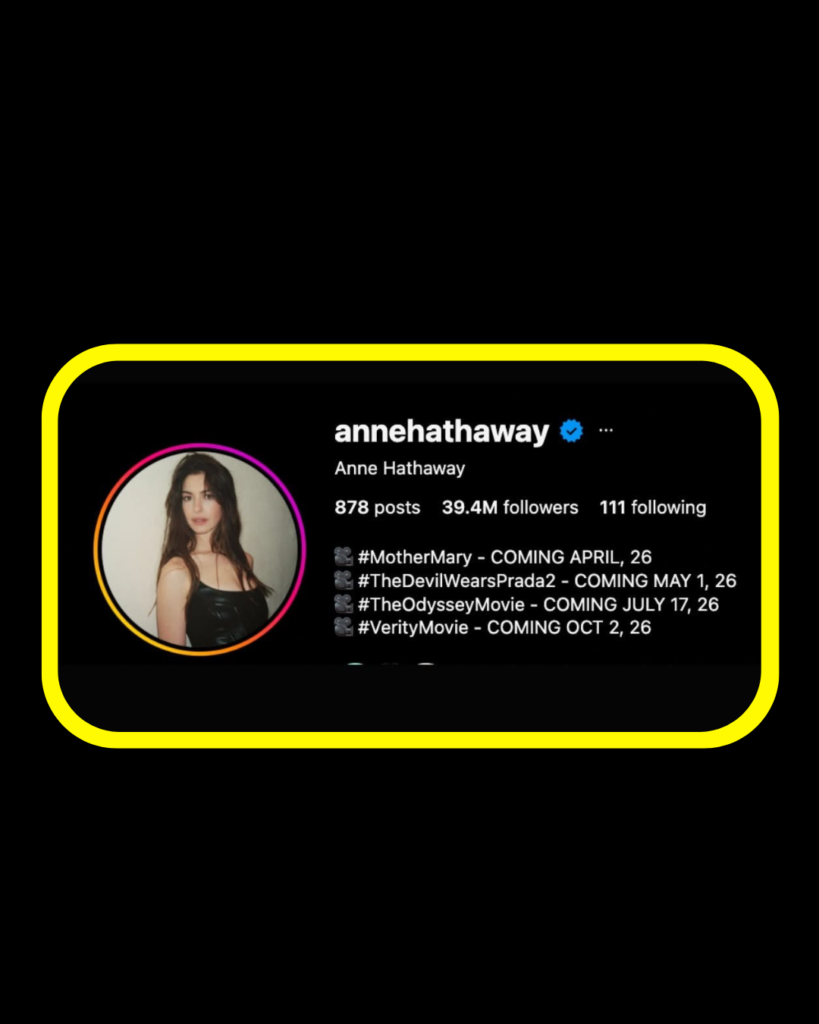
According to the update, Hathaway will kick off 2026 with “Mother Mary,” slated for an April release. The film, backed by A24, casts her as a fictional pop star in a psychological, music‑driven drama that has already started building buzz through early trailer drops and stills. Positioned in the spring, it sets the tone for a year where Hathaway leans hard into challenging, high‑concept material while still anchoring major studio projects.
Just weeks later, she pivots from pop icon to fashion-world nostalgia with “The Devil Wears Prada 2,” now dated for May 1, 2026. The sequel brings her back as Andy Sachs, returning to the universe that helped define her mid‑2000s stardom and remains a staple in meme culture and rewatches. For millennials who grew up quoting the original, the firm release date signals that the long-rumored follow‑up is no longer hypothetical—it’s locked in, with Hathaway front and center.
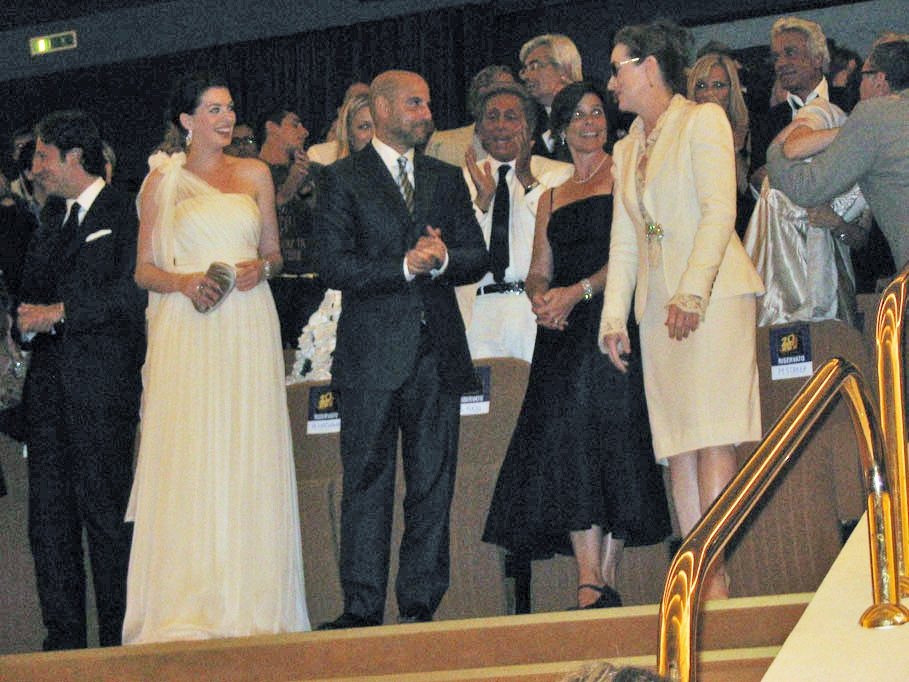
The devil wears Prada
Summer belongs to “The Odyssey,” marked for July 17, 2026. Billed as an ambitious, big‑screen reimagining of the classic tale, the project reunites Hathaway with large‑scale, auteur‑driven filmmaking and promises mythic stakes, prestige casting, and blockbuster spectacle. Its prime July slot suggests confidence from the studio and positions Hathaway as a key face of the 2026 summer season, not just a supporting player in someone else’s tentpole.
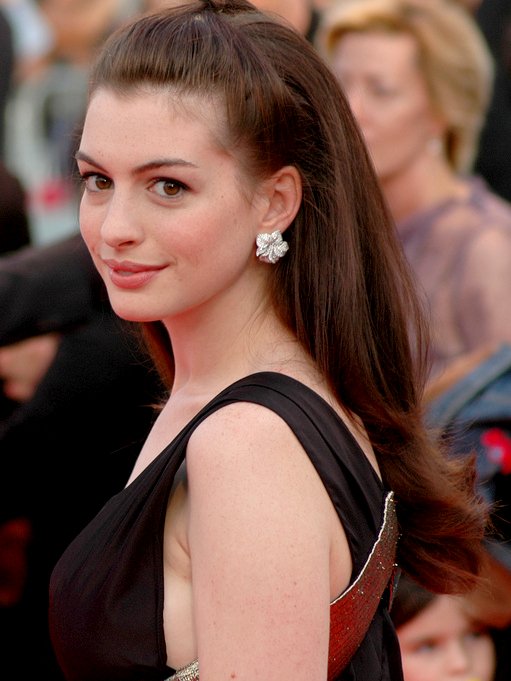
Finally, Hathaway’s bio points to “Verity,” arriving October 2, 2026, rounding out the year with a dark, suspense‑driven turn. Adapted from a hit thriller novel, the film casts her in a psychologically intense role that leans into obsession, secrets, and unreliable narratives—terrain that plays to her ability to toggle between vulnerability and menace in a single scene. Coming at the start of awards season, “Verity” also gives her a potential late‑year prestige vehicle after a run of crowd‑pleasing releases.
What makes this reveal so striking is the casualness of it. In one short line, Hathaway essentially published a studio slate: four movies, four distinct genres, and a timeline that keeps her on screens from spring through fall. For Hollywood, it underlines her staying power as a true marquee name; for fans, it’s an invitation to mark their calendars and prepare for a year where Anne Hathaway isn’t just part of the conversation—she is the conversation.

 Entertainment1 week ago
Entertainment1 week agoWicked Sequel Disappoints Fans: Audience Verdict on For Good

 Entertainment4 weeks ago
Entertainment4 weeks agoAfter Party: Festival Winner for Best Romantic Short

 News4 weeks ago
News4 weeks agoCamp Wackapoo – Rise of Glog Takes Center Stage

 News2 weeks ago
News2 weeks agoYolanda Adams Questions Traditional Views on God’s Gender, Audience Reacts

 Politics4 weeks ago
Politics4 weeks agoTrump’s $2,000 Tariff Dividend Plan: Who Gets Paid?

 Entertainment4 weeks ago
Entertainment4 weeks agoFrancisco Ramos Takes Top Mockumentary Award at Houston Comedy Film Festival

 Film Production4 weeks ago
Film Production4 weeks agoWhy China’s 2-Minute Micro Dramas Are Poised To Take Over The U.S.

 News2 weeks ago
News2 weeks agoEpstein Files to Be Declassified After Trump Order


























